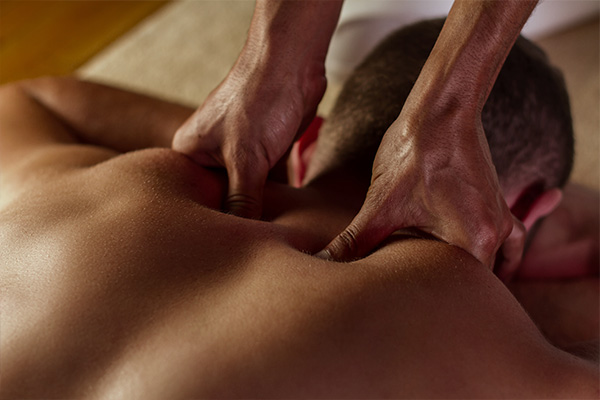Get Ready To Feel Great
Massage Therapy

Benefits Of
Massage Therapy
Levels of stress hormones, such as Adrenalin, cortisol and norepinephrine, are also reduced. Studies indicate that high levels of stress hormones impair the immune system.
Specialized Treatments For Your Goals
Massage Techniques
Deep Tissue/Therapeutic
Deep tissue massages are used to break up scar tissue and break down muscle adhesions (the “knots” that we feel in our muscles are muscle adhesions, which are bands of rigid and painful muscle tissue). These knots can inhibit our circulation and cause pain and inflammation.

Trigger Point
Trigger points feel like little marbles or knots just under your skin. When pressing on trigger points, many people feel no pain or discomfort. Sometimes, trigger points become very sensitive, and some people feel significant pain in areas where they have trigger points.

Cupping
Cupping increases blood circulation to the area where the cups are placed. This may relieve muscle tension, which can improve overall blood flow and promote cell repair. It may also help form new connective tissues and create new blood vessels in the tissue.

Graston Technique®
Graston Technique and instruments enable the treatment of scar tissue and fascial restrictions during rehabilitation that allows for faster rehabilitation and with greater success when the goal is restoring range of motion, eliminating pain, and restoring normal function.

RAPID NeuroFascial Reset
Utilizing a biopsychosocial perspective RAPID addresses the body’s perception of danger, bringing the brain to safety. Most painful conditions and ROM restrictions disappear inducing a combination of descending inhibition within the nervous system, and a powerful increase in vasodilation, offering near immediate and lasting pain reduction in our patients. RAPID sessions may be uncomfortable, this occurs as the neurological system is being stimulated to restore normal function.

Active Release Techniques (ART)

Air Flexion Table
Pulse Therapy, Graston Technique, Dynamic/Static Cupping, Percussion Therapy, & Deep Tissue Techniques are all easily integrated!

Other Advantages Of
Massage Therapy
- Reduced muscle tension.
- Reduction of stress hormones.
- Improved circulation.
- Increased joint mobility and flexibility.
- Heightened mental alertness.

Providing Quality Treatment
Proudly Certifed With




Massage Therapy Treatment
Frequently Asked Questions
General
Try to arrive at least 10 minutes early to complete the necessary forms and get comfortable. We will complete an assessment to understand your massage therapy needs. Before the session starts and after the session ends you will have an opportunity to undress or dress in private.
Each session is 60 minutes long and can be combined with any service we offer.
It's up to you; You can choose to remove only the clothing you're comfortable with removing. However, massage therapy treatments do work best without clothing blocking the massaged area.
Keep in mind that during a session you will be fully covered with a sheet/blanket. We use a draping technique so only the area of your body that is being worked on will be uncovered.
Deep Tissue & Trigger Point Massage
After the massage, you may feel some stiffness or soreness, but it should subside within a few days. Your skin might get a little red after a massage, but typically people don't get bruises. However, some mild bruising is perfectly normal especially if you are receiving Cupping or Instrument Assisted Soft Tissue Mobilization Techniques (Graston). Be sure to contact your massage therapist if you have concerns. Drinking water after the massage may help to flush the metabolic waste from the tissues.
Not always. Massage Therapy can help you with extensive soft tissue damage, injury, chronic disease, pain management, impaired mobility, and of course for common treatments to help stress relief and maintain well-being.
Graston Technique®
You can expect bruising and redness after receiving Graston Technique®. You do not have to worry about it. These are temporary symptoms that will dissipate slowly over the next few days, and are part of the normal process of recovery.
Patients are advised they may be sore, bruised or exhibit small red dots over the area treated, called petechiae. If any soreness is felt after the procedure, ice application for 15 to 20 minutes following the treatment may ease the discomfort.

